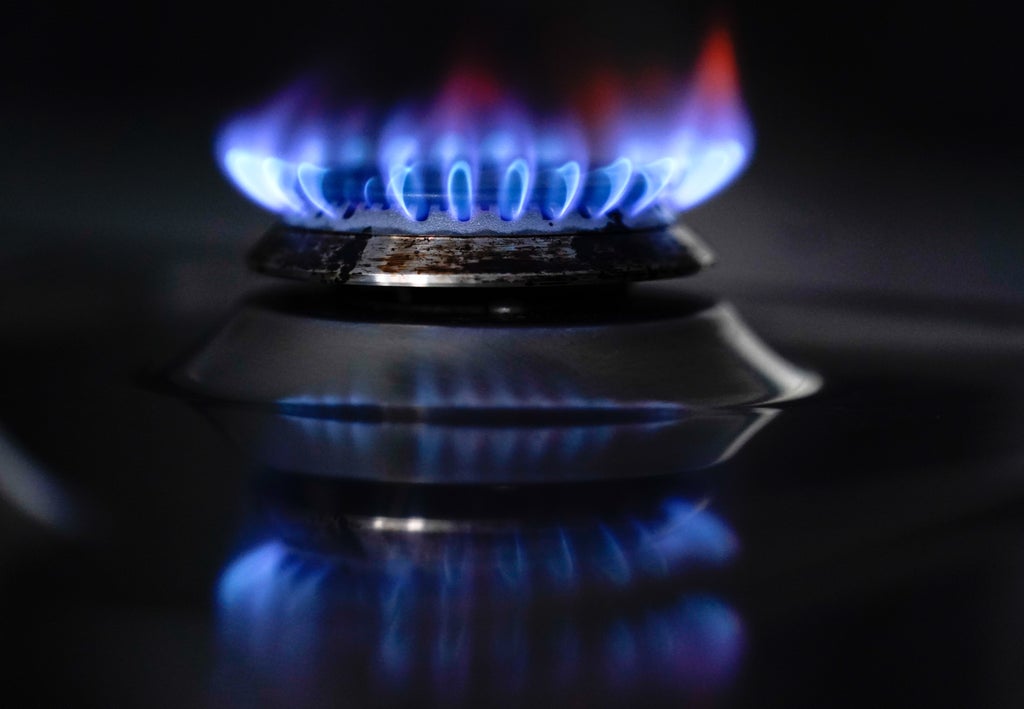
The Kremlin has threatened to stop sending gas to “unfriendly” countries – including all those in Europe – unless they pay in roubles.
Germany and some others have ruled out rouble payments, leading to the prospect of pipes being cut off.
Using analysis by Brussels-based think tank Bruegel, we explore the impact and options for Europe.
What impact would it have in the UK?
The UK gets only a small amount of its gas from Russia, with the lion’s share coming from UK oil fields and Norway.
But prices will still rise here as British energy suppliers compete with other European companies to buy UK gas.
For now, households should be protected from the volatility of the market by Ofgem’s price cap – despite a massive rise that came into force on Friday.
It is early days, but recent analysis from US bank Goldman Sachs suggested that the price cap could be hiked by another 90% in October if Russian gas flows to Europe end.
Which countries would be the worst hit by the strangling of Russian gas supplies?
It’s not a hard and fast rule, but the further east countries are, the more they rely on Russian gas. Germany and Italy would be seriously hit, as would several other countries in the east of the continent.
Who would get off the lightest, and can they help their neighbours?
Spain and Portugal would be less impacted. Ports on the Iberian Peninsula are able to import 40 terawatt hours (TWh) of liquid natural gas (LNG) from ships every month. The peninsula only consumes 30 TWh a month.
But getting that excess gas to the rest of Europe is more complicated; the pipes that connect the area to the continent are only able to carry five TWh of gas every month.
Gas that is imported to France is treated differently to give it an unusual smell to help people detect gas leaks better. This means getting gas from France to other countries is more complicated.
There is also a worry that countries might not be willing to co-operate. Some EU countries have more gas stored than others and they may refuse to export it to their neighbours.
How much gas does Europe store?
Gas storage sites in the EU were around 26.4% full on Tuesday this week, according to data from AGSI, a project run by the union.
This is below the average on the same day during the last 10 years, at 36.3%, but storage was lower in 2018 (17.8%) and 2017 (25.8%).
What could the impact be?
In January, experts at Bruegel said EU countries might have to take “emergency measures” before the end of winter if gas is cut off.
They added: “Until the summer, the EU would likely be able to survive large-scale disruption to Russian gas supplies, based on a combination of increased LNG imports and demand-side measures such as industrial gas curtailments.
“But, should a halt of Russian gas be prolonged into the next winters, it would be more difficult for the EU to cope.”
Could Europe get more gas from elsewhere?
In theory, an additional 1,100 TWh of LNG could be imported to EU ports, compared to what was imported in 2021 (730 TWh).
The EU’s pipelines with Norway could also technically bring 200 TWh more than they did last year, while North Africa and Azerbaijan could supply an extra 450 TWh between them.
Together, all these options could be enough to replace the 1,700 TWh that Russia supplied in 2021. The UK also has space in its pipelines to send another 400 TWh to the EU.
But this does not mean that the supply is there.
The gas will need to be pumped out of the ground in the US, the Middle East and elsewhere, and loaded onto a limited number of ships.
Sellers will then need to choose Europe as their destination above Asia and the Americas.
What could Europe do to reduce the amount of gas it needs?
Around 900 TWh of gas was burned to produce electricity last year; some of this could be replaced by oil.
If Europe is lucky, the weather might turbocharge wind and solar farms. Germany could decide to delay the closure of its nuclear plants and decommissioned coal plants could be brought back into service if they are workable.
Heavy industry such as steel, aluminium and silicon producers could close or slow production.
Governments may also have to step in to tell people to turn down their thermostats.







